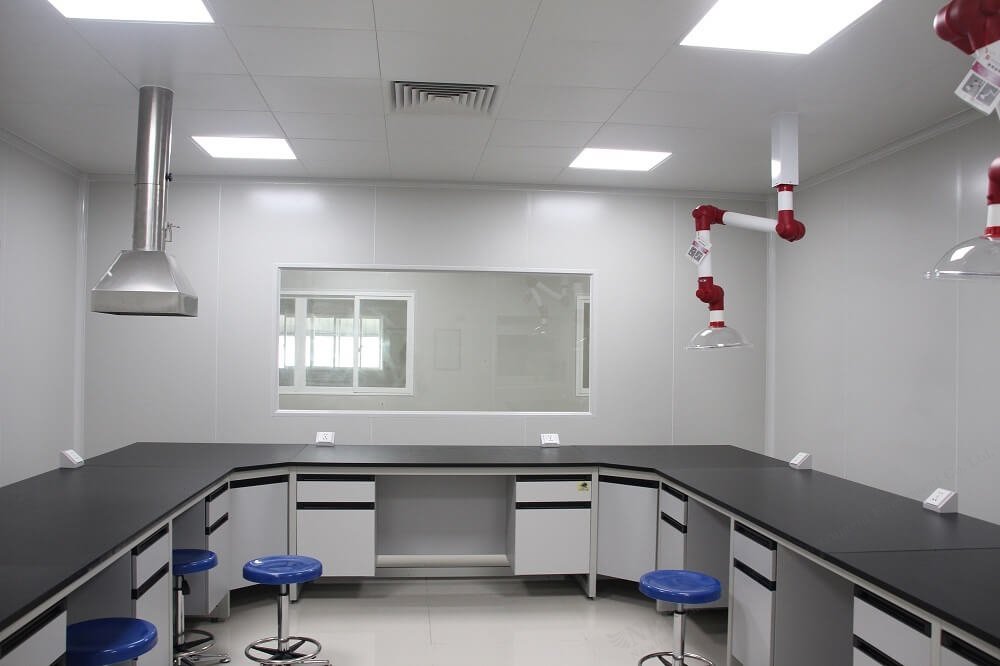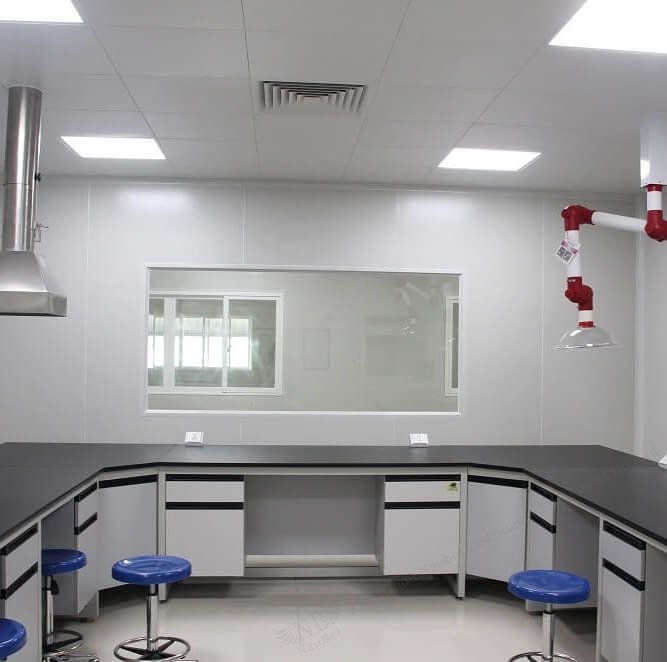
PCR laboratory ventilation design
The PCR laboratory usually adopts a non-unidirectional flow air supply method. The so-called non-unidirectional flow refers to the direction of the airflow streamline is not parallel and the wind speed is also inconsistent. Non-unidirectional airflow organization methods include top-down and back-up, top-down and bottom-back, measurement-feed-down-back, top-up and back-up, and PCR labs generally use top-down and back-up. The upper air supply depends on the high-efficiency air inlet to enter the room, and the lower air return depends on the air outlet at the lower part of the symmetrically distributed exhaust column in each room.
Fresh air enters the treatment unit from the outside, passes through several treatment processes of coarse effect, medium effect, sub-efficient, surface cooling (hot) section, spraying section (humidification), and then enters the clean room.
The exhaust air is divided into two parts: full ventilation and local exhaust. The full air outlet is generally located at the lower part of the exhaust column, and a louvered air outlet with an adjustable filter screen is provided. The air outlet is equipped with an efficient filter air outlet. The local exhaust is the local exhaust of the Class II B2 biosafety cabinet in the room. The wind speed of the cabinet surface is not less than 5m/s. The biosafety cabinet is equipped with an independent exhaust system. The exhaust port is required to be installed on the roof of the building. The exhaust pipe of the safety cabinet is interlocked with the comprehensive exhaust in the room where it is located. The partial exhaust and the comprehensive exhaust cannot be opened at the same time. Both the new fan group and the exhaust system use frequency conversion systems to cope with different variable air volume treatment processes.
Air filtration requirements:
The air supply of the laboratory must be purified and filtered to meet the requirements of national regulations. After the laboratory is completed, the concentration of air supply particles must be determined. The particle concentration is not less than 0.5μm, the filtration efficiency is 95<η<99.9, the resistance is not more than 120Pa, and the processing efficiency is the atmospheric dust counting efficiency, which meets this requirement and can meet the indoor air processing standard of the PCR laboratory before it can meet the laboratory use requirements.
 +8615890068607
+8615890068607
 +8615890068607
+8615890068607
 bella@nanbei-china.com
bella@nanbei-china.com
 Mobile:+86 15890068607
Mobile:+86 15890068607

